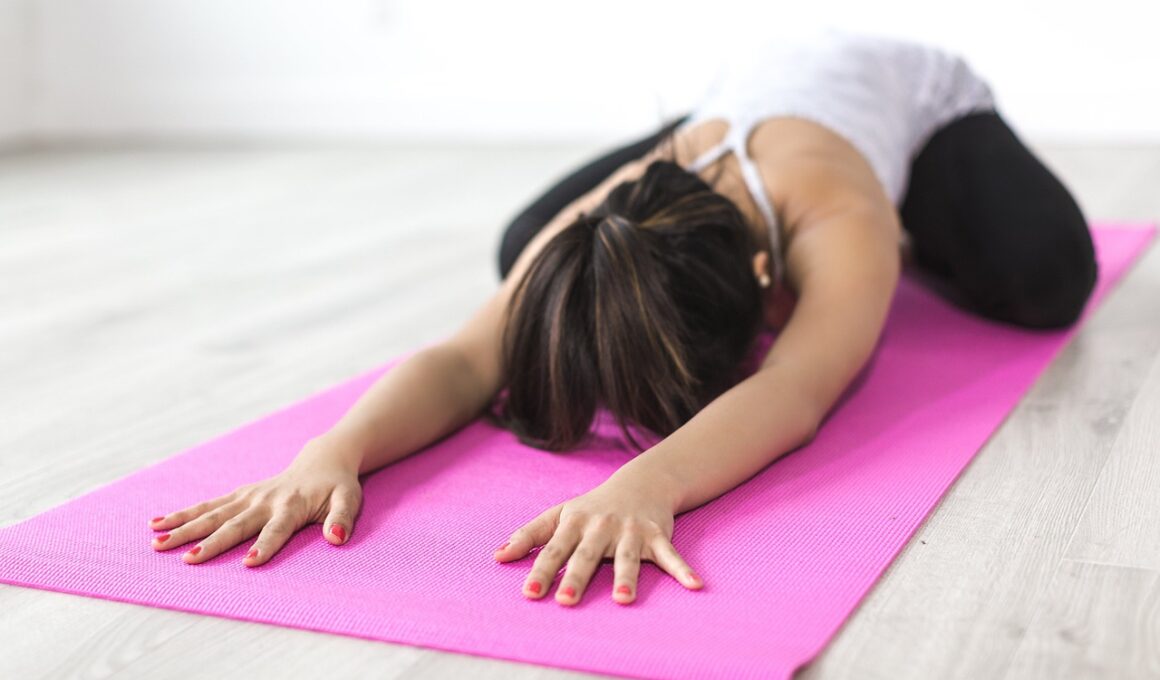Yoga Flow Sequence for a Healthy and Pain-Free Back
Yoga has long been renowned for its numerous physical and mental health benefits. One significant advantage is its ability to alleviate back pain, offering an approachable solution for many individuals suffering from discomfort. Integrating specific yoga practices into one’s daily routine can promote better spinal health, flexibility, and strength. This blog post aims to explore various yoga poses that provide substantial relief for back pain. You will learn how to perform these poses effectively, the significance behind each movement, and how they positively influence overall back health. Yoga not only helps to manage pain but also contributes to reducing tension and stress levels. The combination of physical postures, breathing exercises, and meditation creates a harmonious balance that fosters better well-being. Including these elements into your practice could lead to significant improvements in your health and daily functioning. So, let’s embark on this journey to discover how yoga can transform your back pain experiences and enhance your quality of life. Get ready to roll out your mat and dive into the incredible world of yoga for back pain relief.
Before you start the yoga flow, it’s essential to prepare your body adequately. Warming up effectively can significantly enhance your practice and minimize the risk of injury. Begin by standing tall on your mat, feet hip-width apart. Take a moment to feel your body, noticing areas that might feel tense. Start with gentle neck rolls, releasing tension in the neck and shoulders. Gradually move into cat-cow stretches to warm up your spine. This movement helps in improving spinal mobility. Follow this with forward folds to stretch your hamstrings and lower back. Don’t rush; allow your body to feel each posture, breathing deeply through each transition. Inhaling as you arch your back and exhaling as you fold forward. Begin each session with a focus on breath, as this anchors your practice and enhances awareness. Always listen to your body, modifying poses as necessary. As you progress through the flow, remain aware of your alignment and form, ensuring that you maintain proper posture to prevent strain while deriving maximum benefits from each yoga pose.
One of the foundations of a successful yoga practice is understanding the importance of alignment. When it comes to alleviating back pain, proper alignment can make a world of difference. Misalignment during poses can lead to further discomfort and injury. By focusing on alignment, you promote balance and stability in your body. It is critical to engage your core muscles while practicing poses such as downward dog and mountain pose. This engagement stabilizes your spine and pelvis, providing a solid foundation for movement. Practice holding your poses with intention, ensuring that each body part works synergistically. Pay special attention to your shoulders; avoid tensing them up toward your ears. Use props as necessary, including blocks and straps, to support your practice without jeopardizing alignment. A visual guide, such as an online video or yoga app, can also assist with accurate alignment during your poses. Commitment to proper alignment not only contributes to pain reduction over time but also cultivates a deeper mind-body connection, enhancing the overall efficacy of your yoga practice.
Essential Yoga Poses for Back Pain Relief
Incorporating specific yoga poses into your routine can address back pain effectively. Each pose serves a unique purpose, targeting different areas that contribute to reducing discomfort. Start with child’s pose, which is gentle and restorative. This pose elongates your spine while relaxing the back muscles, making it an excellent initial stretch. Transition into downward-facing dog to further stretch and strengthen your entire back. This pose also lengthens the hamstrings, which can contribute to lower back strain when tight. Another essential pose is cobra pose, which strengthens the back while offering a gentle arch. As you progress, try bridge pose to engage the glutes and lower back muscles actively. Finally, finish your practice with savasana, allowing your body to restore after each effort made. Total relaxation at the end allows the physical and mental benefits of your practice to integrate. Explore these poses mindfully, ensuring you focus on your breath and movements throughout each one to maximize their impact on your back pain.
Breath is a powerful tool we often overlook, yet it plays a critical role in yoga practice. Mastering your breath can enhance your ability to perform poses while alleviating tension in your body. Begin your practice with ujjayi breath, which involves slightly constricting the throat while inhaling and exhaling. This technique creates a calming sound that helps focus your mind and brings energy to your practice. Synchronize your movements with your breath; inhale as you transition into a pose and exhale as you deepen into it. Notably, when holding poses, maintain steady breathing to avoid straining your muscles. Deep, rhythmic breathing successfully reduces feelings of discomfort and centers your focus, allowing you to stay present in your practice. Taking the time to center yourself through breath can enhance your physical and mental well-being, leading to a more fruitful experience on the mat. Mindful breathing also adds an element of meditation, helping you cultivate a stress-free environment beneficial for both mind and body.
In a world filled with distractions and stressors, the importance of a mindful yoga practice cannot be overstated. Establishing a consistent routine is essential for reaping the benefits of yoga for back pain. Consistency matters far more than intensity; practicing regularly, even for short sessions, allows your body to adapt and grow stronger. Consider creating a yoga schedule that integrates short, targeted sessions throughout the week, focusing on back pain relief. This routine can include five to ten minutes of practice each day, progressively building in duration and complexity. Additionally, engage in restorative practices to balance your active routines. Guided meditations focusing on body awareness and relaxation techniques can complement yoga and encourage healing. Don’t hesitate to explore classes or online resources that resonate with you, providing variety and maintaining motivation. The journey to a healthy back is not a sprint; consistency will yield progressive improvements and ultimately lead to a pain-free lifestyle. Celebrate small victories in your practice, and always be patient with yourself as you adapt and evolve through your yoga journey.
The Takeaway
Ultimately, yoga offers a profound pathway toward wellness, particularly for those grappling with back pain. By embracing the poses and integrating mindfulness through breath, you can cultivate a healthier back and a peaceful mind. This journey is not just about physical practice; it is a holistic approach to aligning body and spirit. As you progress through the sequences outlined, remember to listen to your body’s needs and adjust your practice accordingly. Each individual’s experience with back pain varies, and it is essential to honor your unique circumstances. Consider seeking guidance from a certified yoga instructor, especially if you are new to these practices. They can help refine your technique and provide modifications that suit your specific needs. Aim for a supportive environment, encouraging progress towards a pain-free lifestyle. Furthermore, consider combining these poses with other therapeutic practices such as strength training and stretching for enhanced results. With patience, dedication, and an open heart, discover how yoga can guide you toward reclaiming your health and well-being, fostering resilience, and ultimately living a life free from back discomfort.



